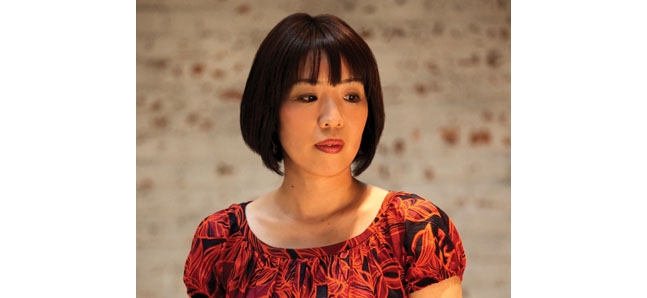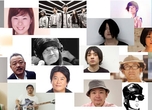Mariko Hamada: Top 5 songs
Musicians' musician Mariko Hamada picks her top Japanese tracks

Posted: Tue Jan 04 2011
Mariko Hamada
浜田真理子
Musician
Mariko began her career as a teenager, initially accompanying herself on the piano in bars, clubs, and hotel lounges in Matsue, where she was born. In 1998, she released her first album Mariko. Her original vocal style has attracted a number of vocal, high-profile Japanese supporters - actress Rie Miyazawa is a fan.
Kyoko Takada: Minna Yume No Naka
高田恭子『みんな夢の中』
'There are a lot of songs that turn you on, but this one calms you down. The lyrics talk about the graciousness of a person that admits his or her lost love, saying, “it is too bad that I gave you so much, as it was just a dream.” The lyrics also say, “happiness and sadness are both imaginary.” Listening to this song, you start to think that it is not only talking about love, but also about something bigger.'
Mutsumi Hatano: Jogashima No Ame
波多野睦美『城ヶ島の雨』
'The tune of the song changes from the first part to the second, and this is what I like about it. The first part talks about how rain is falling (in a minor key), and the second sings about a ship that goes out on the ocean (in a major key). I really like this song, and it's at the top of my list of the songs I'd like to be able to sing someday, but it is extremely difficult given its wide range of octaves.'
Nursery song: Ringo No Hitori Goto
童謡『りんごのひとりごと』
'It's a song about an apple being sold in the city; the lyrics are like a fairy tale. With a sad melody, the lyrics talk about an apple shipped on a train. However, it's not a simple minor key tune. I like it when the song reveals a Japanese musical scale with the sound of Goh; when the lyrics say, “Ringo Kawaiya.” The humor of the composer is cool.'
Ministry of Education’s school song: Ryoshu
文部省唱歌『旅愁』
'The lyrics say, “On a autumn night, I wander alone watching the sky.” I started humming this song on a bus trip and became desperately homesick. With the lyrics saying, “I dream about my mother and father,” I remembered my childhood. It's apparently an American song, though. It's beautiful to think that a foreign song gradually penetrated our hearts so much that it now gives us a sense of nostalgia.'
Japanese Mood Kayo folk-chorus: Nagasaki Ha Kyou Mo Ame Datta
ムード歌謡『長崎は今日も雨だった』
'It's hard to explain the characteristics and charm of Mood Kayo music in a few words, but the major characteristic is that a male vocal sings about female emotions, using female words. We Japanese do not find this strange now, but it may be strange for foreigners who are used to listening to music with the lyrics modified. For instance, when a female vocalist sings a jazz standard, the “he” words in the lyrics are changed to “she” so that it sounds natural. This modification is necessary for foreigners as the vocal and the central character of the lyrics must match. However, Japanese may be accustomed to such a gap, maybe because their ancestors heard stories sung by biwa players who adopted a similar story telling method.'
Monsieur Kamayatsu | Cornelius | Maia Barouh | Takafumi Horie | Masamichi Toyama
Fumika Hideshima | Masayoshi Yamasaki | Keiichiro Shibuya | Mariko Hamada | Sara Marie
Osamu Suzuki | Tetsuo Nakanishi | Towa Tei | Keiichi Ejima | Seiichi Nagai
Gugi Akiyama | Yoshiaki Yamane | Ryota Nozaki | Kazuyuki Izutsu | Itaru Hirama
Tweets
- About Us |
- Work for Time Out |
- Send us info |
- Advertising |
- Mobile edition |
- Terms & Conditions |
- Privacy policy |
- Contact Us
Copyright © 2014 Time Out Tokyo











Add your comment